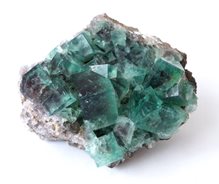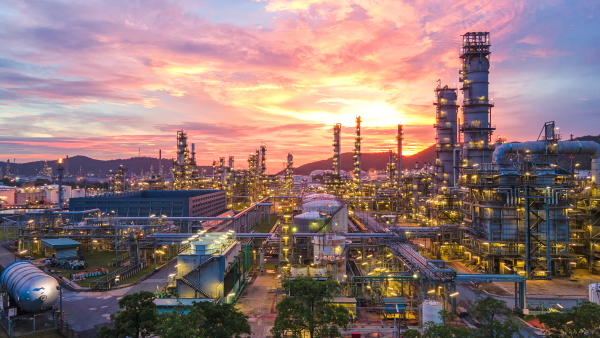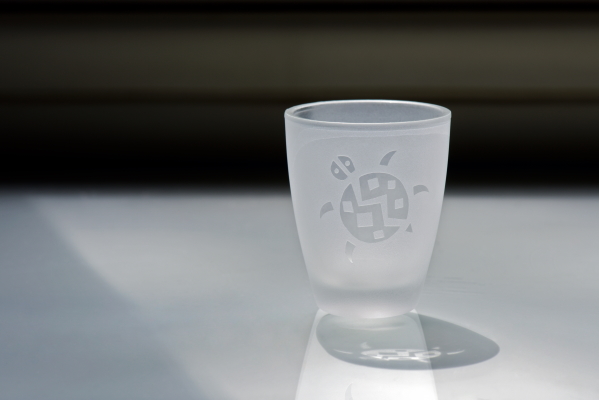Hydrofluoric acid (HF) is a highly corrosive and toxic substance that requires careful handling and storage. Contact with HF can cause severe burns, eye damage and breathing difficulties.
Hydrofluoric acid is an important chemical compound used in various industries due to its unique properties and applications.
Due to the hazardous nature of the substance, strict safety protocols are being implemented in the European market to ensure the protection of workers and the environment. Donauchem can process hydrofluoric acid at its plant in Pischelsdorf, Lower Austria, as well as produce and bottle customised hydrofluoric acid mixtures.
Production and supply
Hydrofluoric acid production in Europe is primarily concentrated in a few key countries. Germany, Spain and Italy are among the largest producers of HF in the region. These countries have advanced chemical production infrastructure and benefit from access to raw materials.

Fig.1: Production of hydrofluoric acid - source www.eurofluor.com (as of 16.5.2023)
Production of hydrofluoric acid
The production of hydrofluoric acid usually involves the following steps:
- Procurement of fluorspar: The main raw material for the production of hydrofluoric acid is fluorspar, also known as calcium fluoride (CaF2). Fluorspar is usually obtained from mines or as a by-product of other mineral processing operations.
- Reaction with sulphuric acid: Fluorspar is reacted with concentrated sulphuric acid (H2SO4) in a reactor vessel. The chemical reaction can be represented as follows:
CaF2 + H2SO4 → 2 HF + CaSO4.
The reaction produces hydrofluoric acid gas (HF) and as a by-product calcium sulphate (CaSO
4), also known as gypsum.
- Separation and purification: The gaseous mixture of hydrofluoric acid and water vapour is separated from calcium sulphate and impurities by a series of condensation, washing and purification processes. This involves cooling the gas to condense and remove water vapour and other acidic impurities.
- Concentrate: The purified hydrofluoric acid solution is then concentrated by removing excess water. This can be done by various methods such as distillation or evaporation.
- Storage and handling: Once the desired concentration is reached, hydrofluoric acid is usually stored in special containers made of materials resistant to its corrosive properties, such as polyethylene or fluoropolymers. Due to its hazardous nature, appropriate safety measures and protocols must be followed during storage, handling and transport.
Industrial applications
Semiconductor industry
One of the most important applications of hydrofluoric acid in Europe is the semiconductor industry. HF is used to etch and clean silicon wafers, a crucial step in the production of microchips. With the continued growth of the electronics sector, the demand for hydrofluoric acid remains constant.
Chemical industry
Hydrofluoric acid is used as a catalyst or reagent in various chemical processes. It is a key component in the production of fluoropolymers used in industries such as automotive, construction and telecommunications. HF is also used in the manufacture of refrigerants and as a precursor in the synthesis of numerous chemical compounds.
Oil refining industry
The European oil refining industry uses hydrofluoric acid in the alkylation process. Alkylation helps to improve the octane rating of petrol by combining lighter olefins with isobutane. HF acts as a catalyst in this process and increases the efficiency and quality of the final product.

Fig.3: Petroleum refinery
Metal industry
Hydrofluoric acid is used for metal extraction to produce rare metals such as niobium (Nb) or tantalum (Ta).
Pickling and pickling mixtures
Due to the high temperatures at which steel is processed, a scale layer is formed. This consists of iron oxide and oxides of other metals in the steel alloy. As the scale adheres firmly to the steel, mechanical removal is hardly possible without leaving residues. For this reason, chemical cleaning is necessary.
For stainless steel, a pickling solution with nitric acid (HNO3) and hydrofluoric acid (HF) is traditionally used for this purpose. This mixed acid is mixed in a previously defined ratio (100-150 g HNO3, 30-35 g HF per litre). The pickling process takes place at 30 °C - 60 °C.
This is because hydrofluoric acid is able to dissolve silicic acid and its salts. This makes it the ideal pickling solution for sand casting. In a mixture with various oxidising substances, HF is used to pickle alloyed steels, titanium, tungsten, molybdenum, niobium, zirconium, tantalum and their alloys.
Glass industry
Glazing can be matted by etching, sandblasting or grinding to obtain an opaque, silk-matt surface.

Fig.4: Frosted glass
Hydrofluoric acid has been used in glass etching since the 17th century. Since glass has a high chemical resistance, only hydrofluoric acid is able to dissolve silicates from its surface. Since then, glass surfaces have been cleaned, matted or decorated with decorations using this process. Compared to mechanical polishing, hydrofluoric acid treatment is much less time-consuming.
When processing glass with hydrofluoric acid, a distinction is made between bright etching (acid polishing), matt etching and deep etching. The result and thus the optical appearance of the glass surface is a combination of the process used, the concentration of the reactants, the temperature of the etching bath and the chemical composition of the glass.
Environmental impact
The European Union has adopted regulations to reduce the environmental impact of hydrofluoric acid. Efforts have been made to reduce emissions of hydrogen fluoride (HF gas), a by-product of HF production and use. Strict guidelines and best practices are in place to ensure the safe disposal of waste streams containing hydrofluoric acid.
Market trends
Increasing demand
The European hydrofluoric acid market is experiencing steady growth due to several factors. The expansion of the electronics and automotive sectors, as well as the demand for advanced materials, are contributing to the increasing consumption of HF in the region.
Technological progress
Continuous research and development efforts in the chemical industry are leading to the discovery of new applications for hydrofluoric acid. In addition, innovative manufacturing processes and techniques are improving the efficiency and sustainability of HF production, further driving market growth.
Conclusion: Dangerous raw material with high importance
Hydrofluoric acid plays an important role in the European market and is used in industries such as semiconductors, chemicals and oil refining. Demand for HF is steadily increasing, driven by the growth of key sectors and technological advances. As the market develops, ensuring the safe handling and environmental compatibility of hydrofluoric acid will remain a priority for manufacturers and regulators alike.
Donauchem GmbH is your supplier and partner for hydrofluoric acid products and customised hydrofluoric acid mixtures. For more information or if you would like to make an enquiry please contact us.
 www.donauchem.at
www.donauchem.at